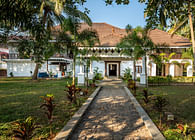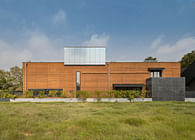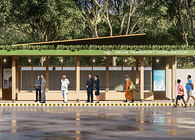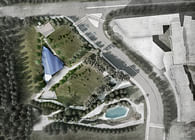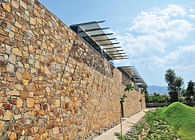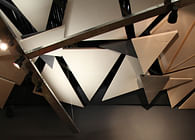
New Delhi, IN
While the world is still grappling with ways to deal with the pandemic, what is evident is that social distancing is here to stay and the fact that it will change our way of life in some ways forever. In fact, in a recent paper in the United States it was said that “prolonged or intermittent social distancing may be necessary until 2022.” The way we dwell, our proxemic behaviour (the use of space) and its impact on interpersonal communication, and the way we organise ourselves in personal, social and public spheres; the post-pandemic ‘normal’ is bound to emerge with new rules. Some of which will probably persist long after the crisis has ended. Some of these new rules shall make us reorganise the existing spatial structures and rethink, redefine and explore design of newer syntactic compositions that can accommodate the socio-economic emergences.
Post the current situation we will surely re-visit the social space (work spaces, institutional spaces, social event gatherings etc.) and the public space (recreational spaces - retail spaces, recreational spaces and events, etc.). In all probability, the new normal might entail a considerable number of strategies around intrusion definitions and proximity ‘control’ in our existential circles. For this very purpose, we need to predict, design and create new applications and products that shall ease our re-habitation into the new normal.
Architecture Discipline in its efforts to initiate a discursion around the need to look into the post pandemic emergent space and future proxemics, proposes a prototype design that shall ease our re-habitation into the new normal. This device can primarily be helpful for the visually or hearing-impaired people as it will help them detect whether they are in safe levels of proximity.
The design process and materials:
We wanted to create an icon which is in keeping with the times. It is a symbol of unity, made with carbon fibre which is abundantly available. The need was to make it easily available, simple, uphold privacy and anonymity, and allow people to be socially ‘normal’ and not ‘distant’. The sChoker – a smart choker and a social distancing neck brace allows proximity monitoring as well as alerts while we move in a social gathering or a public space. The device aims at empowering the human beings with a capability of proximity monitoring and control. It is inspired by the choker, a close-fitting necklace worn around the neck by the women and men in various cultures and tribes across the world and is acknowledged as a much-loved fashion accessory today.
The first prototype proposed is made from carbon fibre and makes use of 3d printing technology or CNC moulding. Latter versions could integrate materials such as velvet, plastic, beads, latex, leather, or metal, such as silver, gold or platinum, etc. They can be adorned in a variety of ways, including with sequins, studs, or a pendant.
Features:
In its technical assemblage, the sChoker in this first version makes use of simple thermal sensors (PIS sensors) to detect close animate presence and inform the host so that he can ‘distance’ appropriately, while still maintaining privacy and anonymity. Ergonomically designed as a circular ring that allows mounting of the PIS sensors to cover a 360 degrees angle and wearing it around the neck (the straightest part of human body while moving) allows sensing without obstruction.
The proximity monitoring integrated follows 3 simple steps:
SENSE: The sChoker works through a PIR/PID sensor (passive infrared sensor/ passive infrared detector) which passively receives and detects infrared radiations that emanate from the body temperature of human bodies and animals in its field of view. As the ‘intruder’ moves in the calibrated range of PIR, it passively receives infrared radiation and focuses on the lens causing the pyroelectric device to generate an electrical signal.
MAP & EVALUATE:
The Choker has an integrated microprocessor chip that maps the multiple receptions, and processes it through a simple code that sorts the wavelength readings and converts it into a proximity value based on the intensity of the wavelength.
Red Zone: Proximity Value 0; Dangerous Level of Proximity – No Tolerance Zone
Yellow Zone: Proximity Value 1; Medium Level of Proximity – Guarded Tolerance Zone
Green Zone: Proximity Value 2; Safe Level of Proximity – Comfortable Tolerance Zone
INDICATE:
The indicating device is the primary communicator to the host; the values received and calibrated are converted to an output signal that are relayed as a visual signal (LED with RGB indication) or an audio signal. This device could either be mounted within the Choker assembly or integrated in an external smart device (smart watch / smart phone) that could be spoken to via Bluetooth.
Status: Built
Location: New Delhi, IN
Firm Role: Designers
Additional Credits: Design Team: Akshat Bhatt, Amit Gupta, Pankaj Kumar

